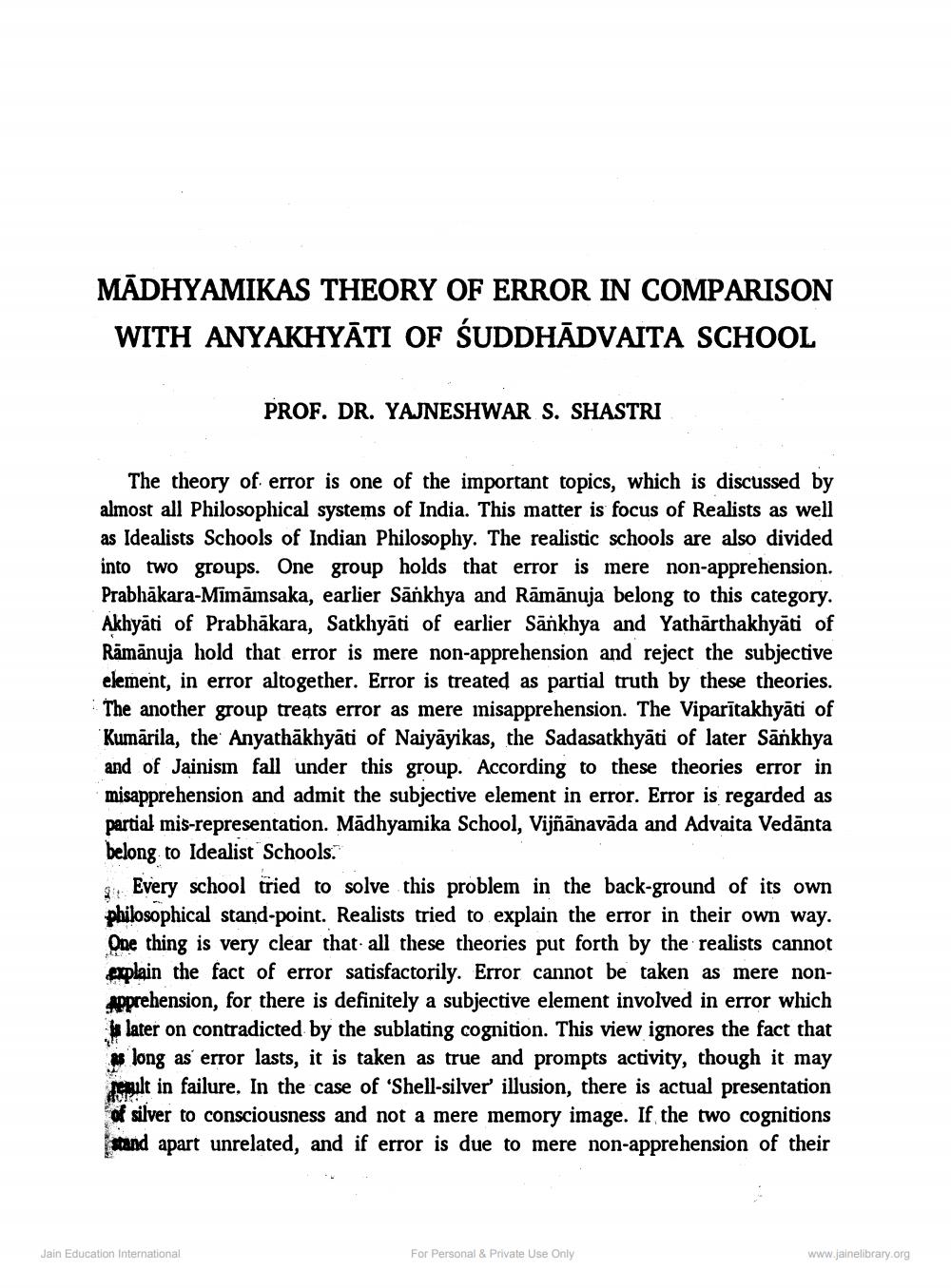________________
MADHYAMIKAS THEORY OF ERROR IN COMPARISON WITH ANYAKHYĀTI OF ŚUDDHĀDVAITA SCHOOL
PROF. DR. YAJNESHWAR S. SHASTRI
The theory of error is one of the important topics, which is discussed by almost all Philosophical systems of India. This matter is focus of Realists as well as Idealists Schools of Indian Philosophy. The realistic schools are also divided into two groups. One group holds that error is mere non-apprehension. Prabhākara-Mimāmsaka, earlier Sankhya and Rāmānuja belong to this category. Akhyāti of Prabhākara, Satkhyāti of earlier Sāňkhya and Yathārthakhyāti of Rāmānuja hold that error is mere non-apprehension and reject the subjective element, in error altogether. Error is treated as partial truth by these theories. The another group treats error as mere misapprehension. The Viparītakhyāti of Kumārila, the Anyathākhyāti of Naiyāyikas, the Sadasatkhyāti of later Sankhya and of Jainism fall under this group. According to these theories error in misapprehension and admit the subjective element in error. Error is regarded as partial mis-representation. Madhyamika School, Vijñānavāda and Advaita Vedānta belong to Idealist Schools. 2. Every school tried to solve this problem in the back-ground of its own philosophical stand-point. Realists tried to explain the error in their own way. One thing is very clear that all these theories put forth by the realists cannot explain the fact of error satisfactorily. Error cannot be taken as mere nonApprehension, for there is definitely a subjective element involved in error which
later on contradicted by the sublating cognition. This view ignores the fact that as long as error lasts, it is taken as true and prompts activity, though it may result in failure. In the case of 'Shell-silver' illusion, there is actual presentation of silver to consciousness and not a mere memory image. If the two cognitions stand apart unrelated, and if error is due to mere non-apprehension of their
Jain Education International
For Personal & Private Use Only
www.jainelibrary.org




